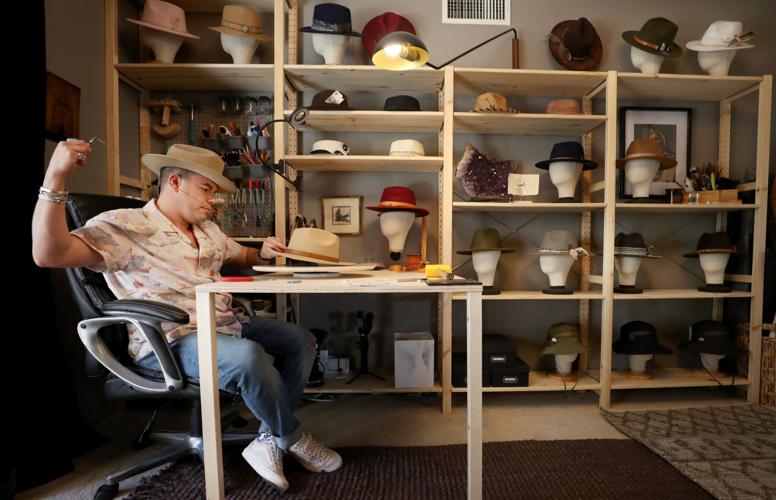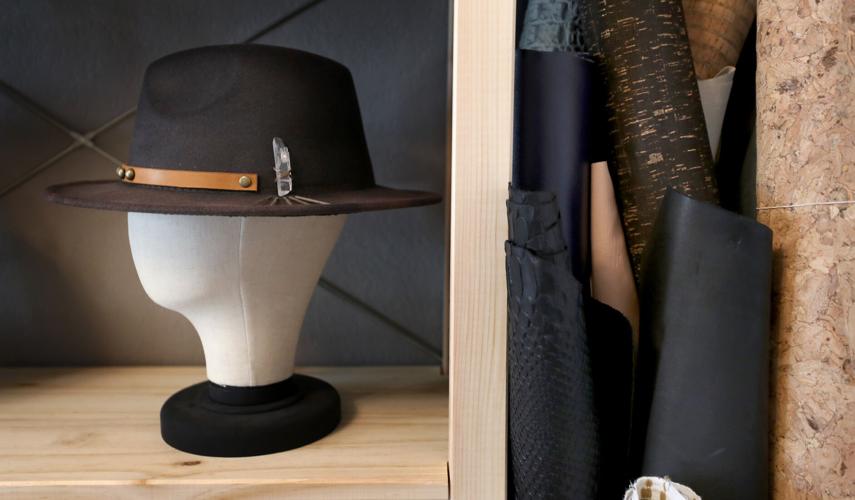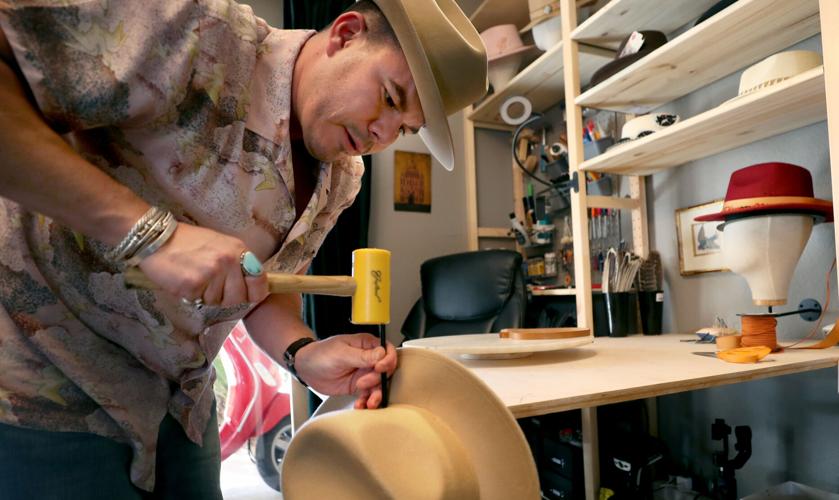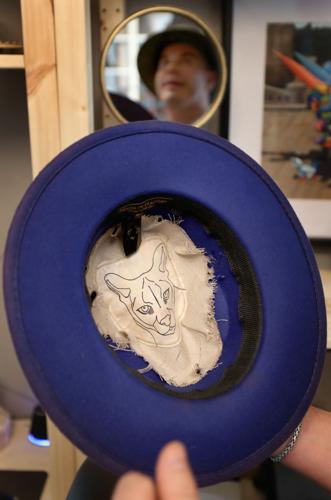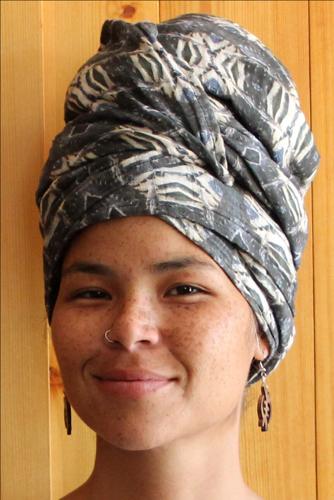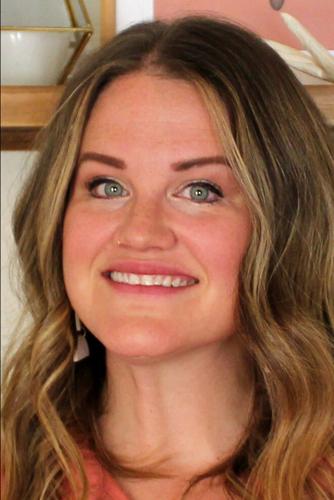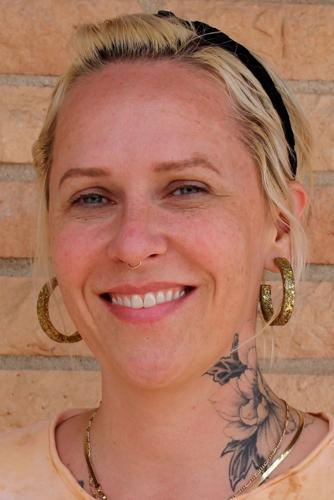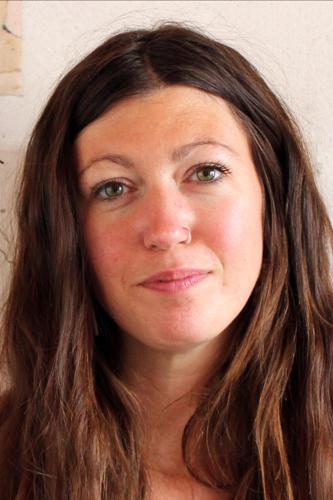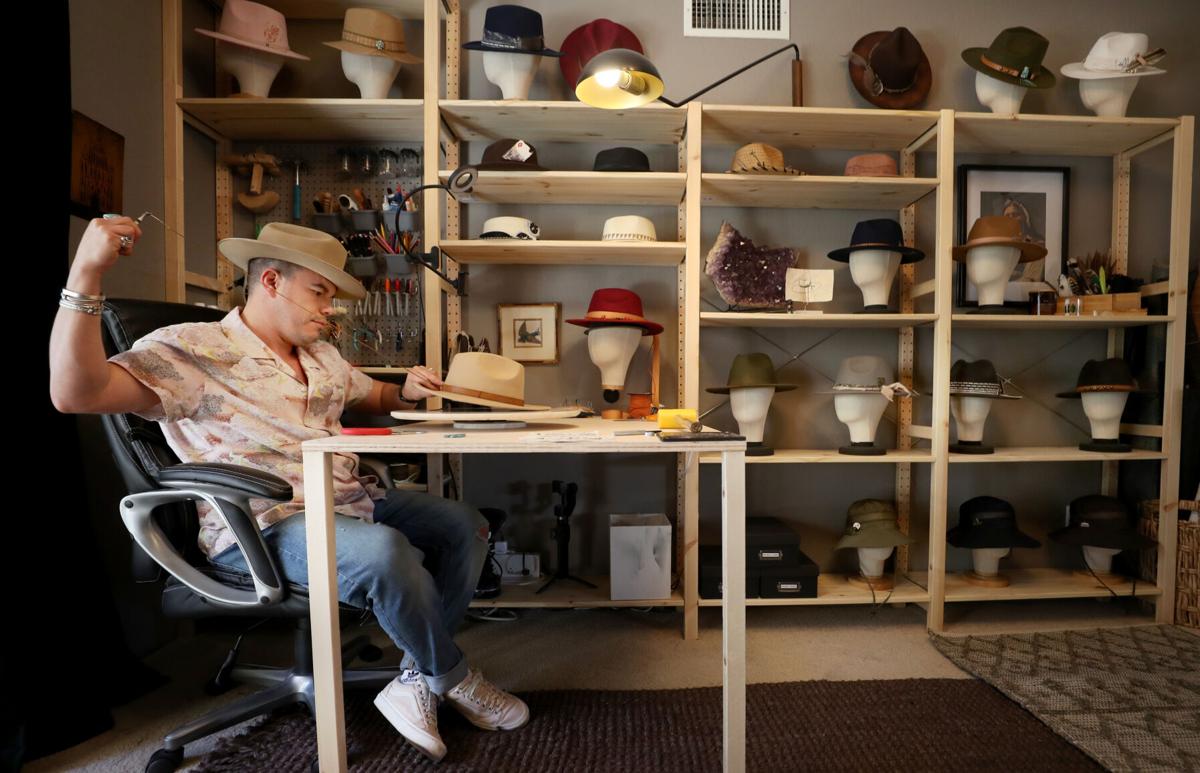As the owner and creative designer of Tucson hat shop House of Hatters, Alain Garcia pulls inspiration for his handcrafted fedoras from his worldly travels.
Decorated with sustainably sourced stitch-stones, feathers and more, Garcia’s designs have been influenced by places such as Cartagena, Colombia; San Miguel de Allende, Mexico; and the Yucatan Peninsula of Tulum.
But global travel restrictions put in place due to the COVID-19 pandemic, have prevented Garcia from taking his usual work trips outside of the country, let alone crossing state lines, so he began taking little road trips around Arizona to get his creative juices flowing, focusing on the grounding aesthetics of the Southwest.
The result is the House of Hatters’ “Tucson Collection,” an ode to its dwellers, offering them the chance to wear the desert magic on their heads.
The collection is a collaboration among the 36-year-old Garcia — whose work has been featured in GQ, British Vogue and the Condé Nast Traveler — and eight Tucson artists.
“The times dictated what I should do. I couldn’t travel, I wasn’t going to not make a collection,” Garcia said, shaking his head at the notion of slowing down, even during a global pandemic.
Garcia began reaching out to local artists last December, embarking on an innovative and virtual venture with the artists whose work varied in mediums such as macrame, installation art, graphic design, polymer clay and more.
One such artist was Rachel Rose, a graphic designer and creator of Juju & Moxie Design Co.
“I think it’s really neat for people who maybe are really into hats, for him to bring in some people that they would never even venture to look at. The collaboration helps open up windows and doors for our community and for other artists to see what’s happening and vice versa,” the 39-year-old Rose said.
WEAVING THE ART COMMUNITY TOGETHER
Giving some previous illustrations a refresh for the collaboration, Rose’s work offers a funky spin on Mexican folklore. She is inspired by the quirkiness of Tucson architecture and the diverse color palette of its illustrious sunsets. Rose feels the project is a breath of fresh air for the local art base.
Another collaborator is a newcomer to the local art scene, Edna Alejandra Bernal Olmedo, a macrame artist who specializes in custom plant hangers.

Edna Bernal Olmedo
What began as a hobby turned into a side hustle after being furloughed last year during the local shutdown. In late August, Olmedo launched her online shop, Studio Ocotillo. The 30-year-old weaves traditional bohemian cream-colored cords with her own “moody-modern” spin, braiding stormy grays, sage greens, shadow blacks and terracotta reds into her work.
“I think it’s important to have each other’s backs in the art community, especially in a city like here in Tucson. But I think the last couple of years it’s been very important to support other artists and really highlight their work, because it’s not just you know, like a single artist. We all belong to a community,” Olmedo said.

One of the of fedoras from Alain Garcia’s House of Hatters’ “Tucson Collection,” a Wyatt, features a piece of quartz stitched to the band area.
Finding a similar sense of comfort among pastel-colored succulents, emerald pathos plants and sage agaves, is Trevor Mock, a visual artist and creator of Sonoran Witch Boy. He works within the magical realm of fungi. A native Tucsonan with a strong background in botanical history and experience of working in a herbarium, Mock’s unique style is sourced by idyllic desert tones.
Mock, 28, has breached his comfort zone for this project, sketching illustrations of animals for the Tucson Collection, meshing his scientific style.
“I think it helps kind of reinvigorate our creative energy and makes us do things that we wouldn’t normally do just on our own. I think it also helps us to kind of broaden our markets and our audience. … It is always challenging because you have to kind of mix two creative minds that may not always work well together,” Mock said.

Trevor Mock
Looking forward to the days of gathering all in one place, Mock is excited to see his fellow artists’ work.
In the meantime, he has partnered with local creators for social media giveaways — an alternative to traditional markets that help artists gain exposure. Mock and Kelsi Somers, a Tucson Collection collaborator who serves as hand-lettering artist and creator of Selah & Bloom, have uplifted each other through “giveaway loops” and socially distant pop-ups.
Other collaborators within the project include Scout Dunbar, Fiona Felix of Dusty Moon Studio, Nikki Berger Martinez of Shadow and Growth and Lauren Valenzuela of Sigfús Designs.

Alain Garcia and his House of Hatters is collaborating with area artists to create a collection of hats inspired by Tucson and the southwest. The 35 fedoras feature art work incorporated in the hat, hat band or brims.
“It does kind of weave us together and the community, too. I think that someone that would be a fan of Sigfús for example, wouldn’t be a fan of mine, and now we’re kind of partnering. So it expands your clientele. … It’s cool to see a design that’s merged by two artists,” Garcia said.

Kelsi Somers
Somers, 34, completed five sketches of watercolors and linework design for Garcia, admiring the artistic freedom within the collaboration. In her words, this project is a chance to, “physically wear desert magic on our heads.”
THE MAN BEHIND THE HATS
An architect by trade, Garcia has always had an aptitude for creative fields. Dabbling between urbanism, interior design and event-planning, Garcia’s studies and passions have taken him to extraordinary cities and schools from Monterrey to San Francisco, ultimately ending up at a wellness ranch in Sonoita. Around that same time, his father passed.
“My dad always wore hats,” said Garcia.
His father, a lawyer who would dress up like a cowboy on the weekends, worked their family ranch in Sonora, Mexico. Garcia received his first hat when he was 6 years old. It was identical to his father’s light tan, 12X-Stetson — in his words, “a really good hat.”

The lining of one of Alain Garcia's "Tucson Collection" hats features the work of a puma by artist Trevor Mock.
“I knew that my job there had an expiration date. I knew that they were going to ask me to stay, but I was going to decline. And I knew that in the next six months I needed to think of what was my next move, so I was like, ‘You know what? I think I want to design hats.’ I started designing them on AutoCAD and a couple of other programs. Then I took a trip to Ecuador, met with two factories and one of them was the golden one.”
Thus, the inception of House of Hatters.
Within six months, Garcia developed his first prototype. The “Arabella” — a red center dent, wide brim, cotton and polyester fedora, embellished with a jam-colored waxed denim hatband, a brass “Escapulario” cross pendant and turquoise hand-stitched “Parroquia” motif — is named after his mother.
House of Hatter’s hats are outsourced from skilled milliners from Ecuador; the accessory elements are sent in by artisans of whichever area Garcia is working with.

Scout Dunbar

Lauren Valenzuela

Fiona Felix
Between ethically sourced turkey feathers found in the grasslands of Sonoita to reused packaging materials, House of Hatters works toward being green. Garcia says smaller businesses have better opportunities for being environmentally conscious.
“Whenever you buy a hat, you’ll see that we have a stamp on the inside of the box that says, ‘Do not judge a box by its cover’ because we reuse shipping materials,” Garcia said.
Garcia’s half of the “Tucson Collection” prototypes illustrate familiar tones of rocky desert sand, mauve pinks, sage greens and midnight blues.
The pieces from the collection will launch May 6 on the House of Hatters website, houseofhatters.com, with prices ranging from $65 to $120. Follow the company at instagram.com/houseofhatters or at facebook.com/houseofhatters.

Alain Garcia attaches a band to a Hugo, one of his fedoras from his "Tucson Collection," from his House of Hatters.


